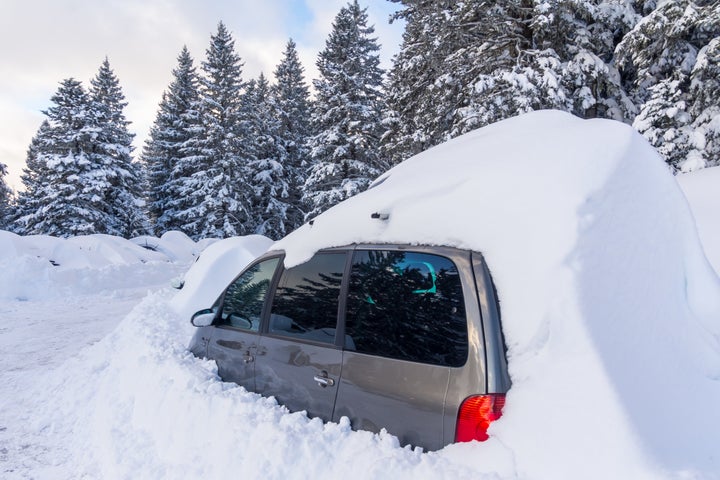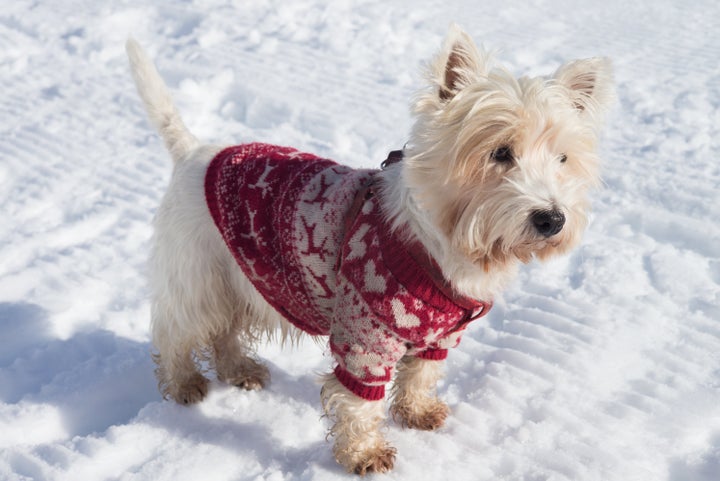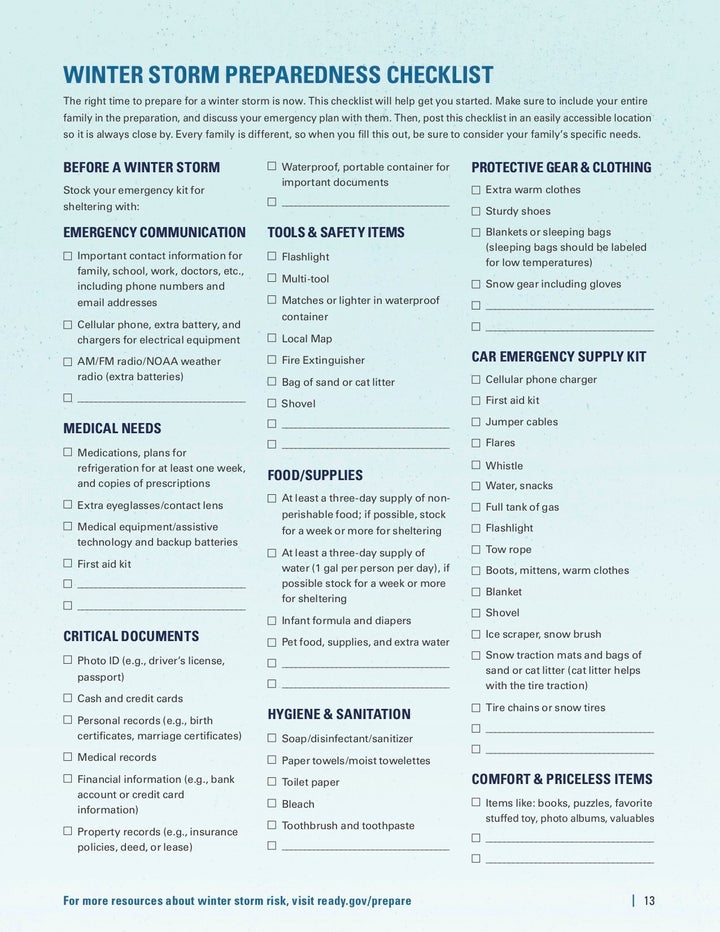Frigid temperatures and brutal weather conditions are set to sweep through the Midwest and Northeast this week and next as a polar vortex in the Arctic Circle threatens to drop temperatures even further in what has already been a record-breaking deep freeze for some parts of the United States.
In the coming days, temperatures will be below zero “continuously for 48-72 hours” in some parts of the Midwest, according to AccuWeather. Those conditions can cause frostbite in mere minutes, and folks from North Dakota to New York City can expect swift temperature drops as the cold front moves east.
Snow and subzero temperatures can be tough to deal with as they happen. Now is the time to prepare for winter weather, by stocking up on supplies and mitigating emergencies such as frostbite and hypothermia, frozen and busted water pipes, and power outages.
Here are some of the basics of winter weather preparedness:
Stock Up On Basic Supplies

First, ask yourself, “What would I need if I couldn’t move from this spot for days on end?”
The government suggests having several days’ worth of nonperishable food and water, as well as warm clothing and blankets, in your home, workplace and/or vehicle, or wherever you might get stuck for several days.
The same goes for other primary needs: Have at least a three-day supply of medicine, such as insulin and inhalers; pet food; and any food that might be specific to your family’s dietary needs. Also, keep several days worth of firewood, wood pellets and/or propane in your reserves.
Then you’ll want to think about tools. Emergency communication devices, batteries, chargers, a radio, a shovel, flashlights, matches, long-burning candles and a multi-tool can go a long way. Having a simple kit in your home and your vehicle is a good idea, and if you need help making one, the Federal Emergency Management Agency has got you covered, and we’ve embedded a checklist at the bottom of this post.
Prevent Your Pipes From Freezing And Bursting

Water expands when it freezes, so you don’t want it to freeze inside the pipes in or around your home. The American Red Cross has some tips for preventing disaster:
During extremely cold weather, run water (even just a trickle) on any faucet served by pipes that are exposed to the elements.
Keep the temperature on your thermostat the same all day and night, and if you’re leaving for an extended period, don’t let it dip below 55 degrees Fahrenheit.
Open kitchen and bathroom cabinet doors to allow warm air to circulate around pipes (and remember to keep harmful cleaning products out of pets’ and children’s reach).
Keep garage doors closed if there are water lines in the garage.
Consider insulating pipes (heat tape and insulating sleeves, but even newspaper works in a pinch) that are exposed.
If the pipes freeze, open your faucets to allow for the expansion of frozen water. If the pipes break, shut off the water control valve in your home. But do not use a blowtorch or a kerosene or propane heater to unfreeze your pipes ― that’s a fire hazard.
Which brings up the next point...
If You Lose Power, Never Heat Your Home With Gas
Do not use an oven, charcoal grill, portable generator or any fuel-burning space heater to heat your home. They can release deadly carbon monoxide gas. FEMA notes that, on average, 430 Americans die of unintentional carbon monoxide poisoning each year.
Instead, use only portable heating equipment that’s approved for indoor use, use it sparingly and keep it away from anything flammable, like drapes. Any space heaters should be plugged directly into the wall, not into a power strip.
If you’re using a fireplace, make sure your chimney is clear of debris.
Lastly, insulate your home. Hang big blankets over windows and doorways, have everyone stay in a well-insulated room and dress warmly indoors, suggests the New York City Department of Emergency Management.
Understand Signs of Hypothermia And Frostbite
Signs of hypothermia, according to FEMA:
Uncontrollable shivering
Memory loss or disorientation
Incoherence or slurred speech
Drowsiness
Apparent exhaustion
Signs of frostbite
Loss of feeling and a white or pale appearance on limbs and extremities, such as fingers, toes and the tip of the nose.
If you detect signs of hypothermia, get the victim to a warm location and remove any wet clothing they have on. Wrap them in blankets and put them in dry clothing. Give them warm, non-alcoholic beverages, if they’re conscious. Take their temperature ― if it’s below 95 degrees, get them medical attention immediately.
If you detect signs of frostbite, cover the exposed skin, but don’t rub it, which could further injure the victim. Seek medical attention.
Lastly, be aware that cold weather saps your energy ― don’t overexert yourself, and pay attention to those who might be doing work outside or showing signs of exhaustion.
Don’t Forget Your Pets!

Keep your pets sheltered, preferably inside with you, The Humane Society of the United States suggests. Your daily dog walks are fine as long as the conditions are safe enough, but remember that cold saps your pet’s energy just like it does yours, and their wet noses, ears and paw pads are susceptible to frostbite. Stockpile food, and if you’re worried about outdoor animals, HSUS has tips on how to help them (a plastic tub makes for a quick cat shelter, for instance).
Consider This Checklist From FEMA:


